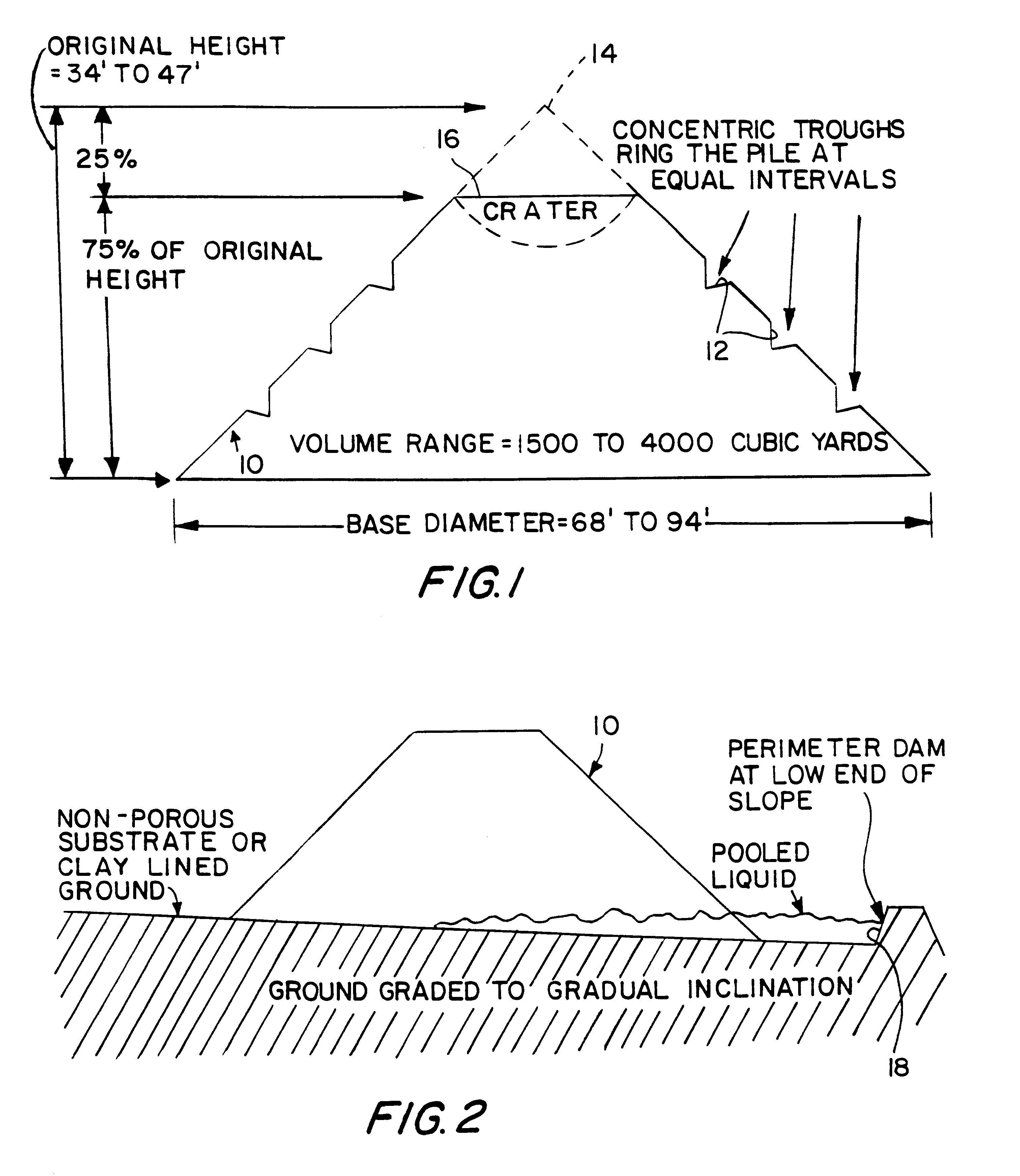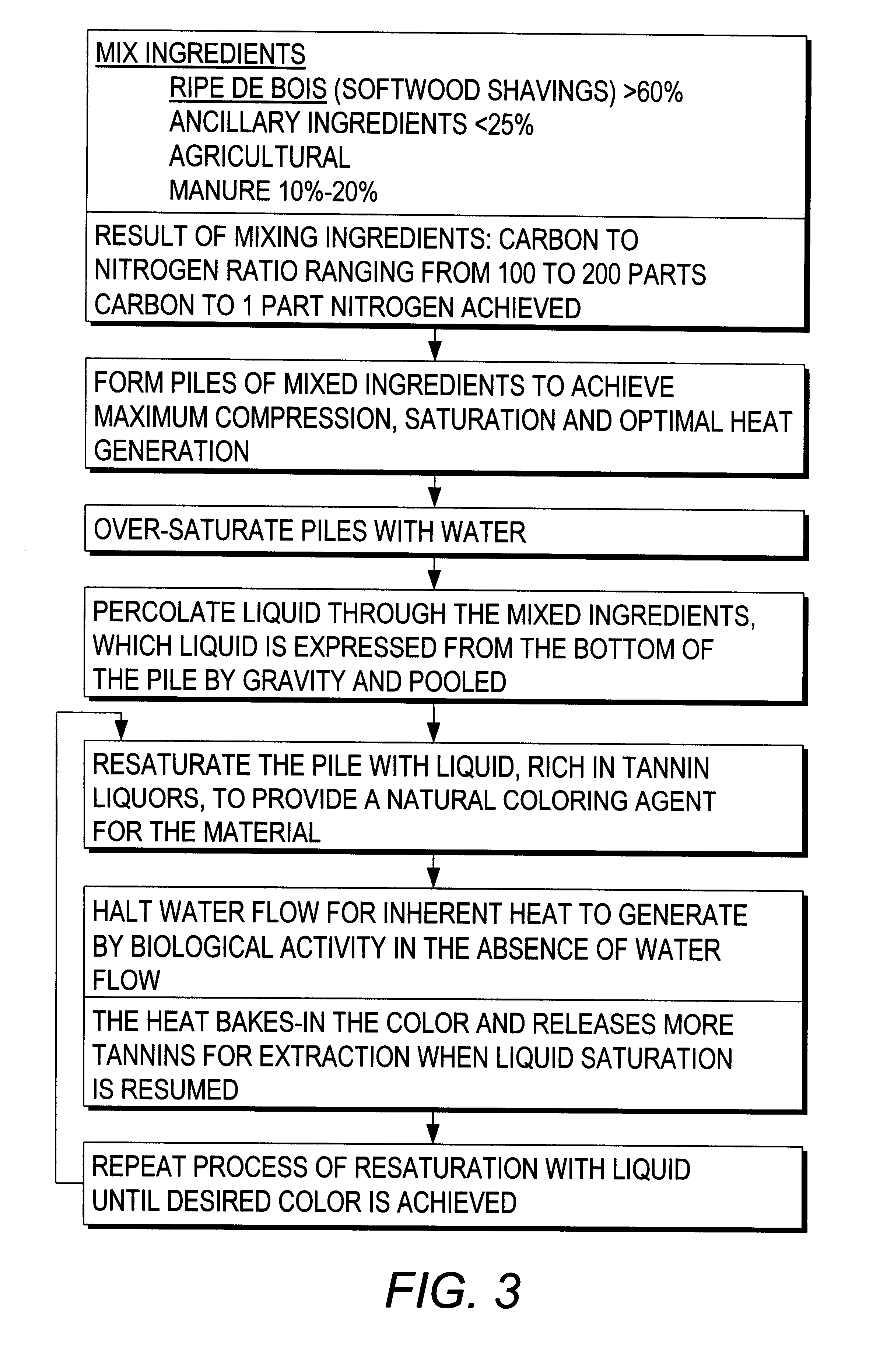Method for making soil conditioner
a technology of soil conditioner and process, applied in the field of processing the production of mulch, can solve the problems of many commercially produced mulches containing undesirable ingredients and the low temperature range used by zeagers is much too low to include biological activity
- Summary
- Abstract
- Description
- Claims
- Application Information
AI Technical Summary
Benefits of technology
Problems solved by technology
Method used
Image
Examples
Embodiment Construction
According to the present invention, spent stable bedding is collected and used to form a mixture, including, by volume, no more than 5%-25% agricultural manure in relation to softwood shavings. Usually the manure will be in the range of 10% to 20%, by volume, but when harvesting agricultural manure from high-profile show barns, manure content may drop below 5%. When agricultural manure content is harvested from other stables the manure content can be as high as 20%-25%, but, in any case, proper mixing with the softwood shavings is essential.
Of the total volume, at least 60% should be ripe de bois softwood shavings, or other softwood chips, plus any other ancillary ingredients, such as soiled cow bedding, grass clippings, spoiled silage or green chop, and agricultural manure if nitrogenous supplements are called for; and straw, sawdust, or any organic woodchip or shaving of homogenous size when carbonaceous materials are called for. This is to achieve a ratio of carbon-to-nitrogen ra...
PUM
| Property | Measurement | Unit |
|---|---|---|
| volume | aaaaa | aaaaa |
| total volume | aaaaa | aaaaa |
| total volume | aaaaa | aaaaa |
Abstract
Description
Claims
Application Information
 Login to View More
Login to View More - R&D
- Intellectual Property
- Life Sciences
- Materials
- Tech Scout
- Unparalleled Data Quality
- Higher Quality Content
- 60% Fewer Hallucinations
Browse by: Latest US Patents, China's latest patents, Technical Efficacy Thesaurus, Application Domain, Technology Topic, Popular Technical Reports.
© 2025 PatSnap. All rights reserved.Legal|Privacy policy|Modern Slavery Act Transparency Statement|Sitemap|About US| Contact US: help@patsnap.com


